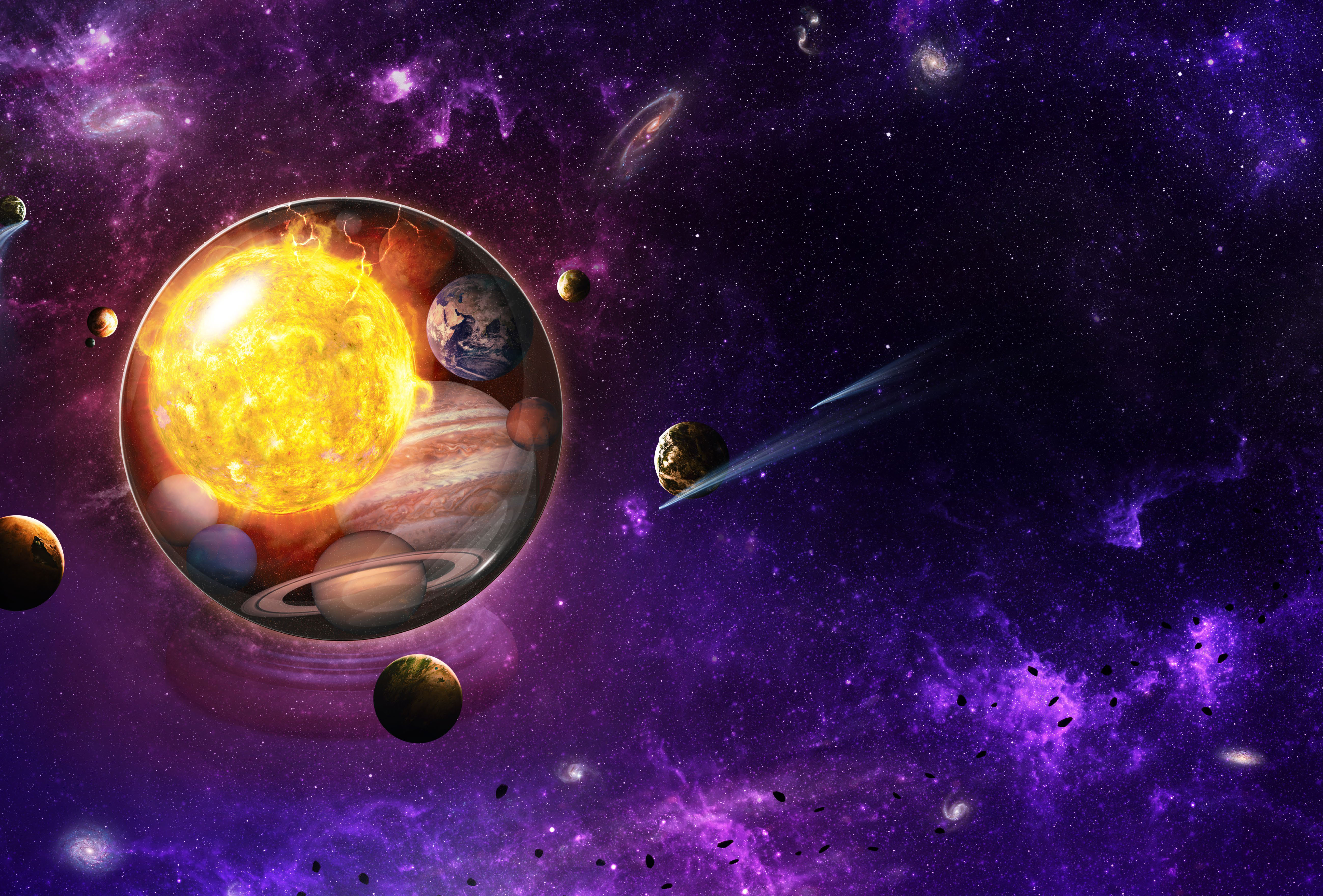Ever since it settled down from a period of early turbulence about 4 billion years ago, our Solar System has provided a more or less stable home to Earth and the other planets and bodies that orbit the Sun. But how long will it stay that way? It’s certain that the Sun is ultimately doomed to brighten and swell enormously in size, becoming a red giant whose bloated outer atmosphere will threaten to engulf the Solar System’s inner worlds 7 billion years from now - but long before then there are sure to be other changes that alter our planet and others, perhaps beyond recognition.

In the relatively near future, it is tidal forces between planets and their satellites that are likely to have the most impressive effects. These arise as angular momentum is transferred between the planet and moon due to tides on the planet and in response to the moon’s gravity, resulting in a consistent ‘tug’ on the moon’s orbit. For most moons in the Solar System the result is that the satellite slowly spirals away from the planet, while the planet slows its rotation. This is what is happening in our own planetary system - the Moon gets an average of 3.8 centimetres (1.5 inches) farther away from Earth each year, while Earth’s rotation slows by 1.7 milliseconds per century. Over millions of years the orbits of most moons in the Solar System will get wider.